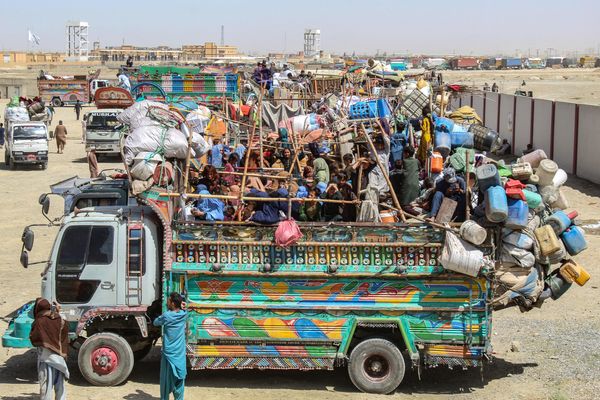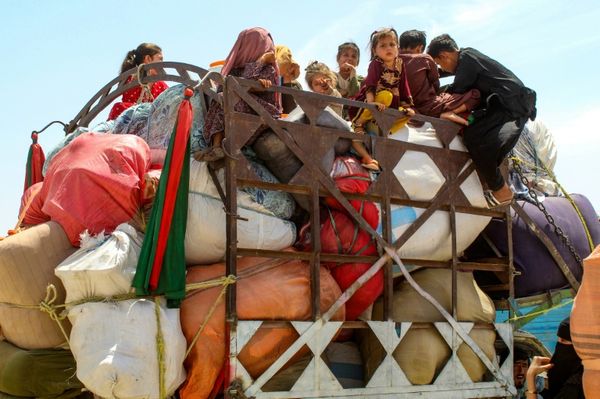
US officials have expressed optimism that a ceasefire deal in the war in Gaza “is in sight”, despite growing indications from Israel and Hamas that a breakthrough is not imminent and as renewed fighting rages in parts of the Palestinian territory.
Washington has put pressure on both parties to accept a bridging proposal suggested during internationally mediated talks in Qatar last week, dispatching the secretary of state, Antony Blinken, on his ninth visit to the region since the conflict broke out 10 months ago. The latest round of negotiations, in which Hamas is not directly participating, were scheduled to restart in Cairo by Thursday but appear to have been postponed.
Hamas has said the latest proposal veers too closely to Israel’s demands, but characterised comments by the US president, Joe Biden, on Tuesday that it was backing away from an agreement as “misleading”.
Israel’s prime minister, Benjamin Netanyahu, has reportedly refused to countenance an Israeli withdrawal from the Netzarim corridor that now bisects the Gaza Strip, or the Egypt-Gaza border – a red line for Hamas and for Cairo.
Israel’s Yedioth Ahronoth newspaper quoted “officials knowledgable about the negotiations” as saying “the chances for a deal are slim” but attempts were being made to hold talks in Cairo on Friday and Saturday.
It said, quoting the same source, that Netanyahu insisted on an Israeli army “presence along the Philadelphi corridor” on the Gaza Strip’s border with Egypt and that the US “demanded a significant withdrawal of troops” in two stages.
The paper said “the Americans understood the mistake” made by Blinken when he announced during his visit to Israel that Netanyahu had accepted a US proposal to bring the two sides closer together and that “the ball was now in Hamas’s court”.
Yet Linda Thomas-Greenfield, the US ambassador to the UN, told the security council on Thursday that an agreement was “now is in sight”, after a phone call late on Wednesday in which Biden pressed Netanyahu on agreeing to a deal.
In the call between the leaders, in which the vice-president and presumptive Democratic nominee, Kamala Harris, also took part, the US leader stressed to his Israeli counterpart “the urgency of bringing the ceasefire and hostage release deal to closure and discussed upcoming talks in Cairo to remove any remaining obstacles”, a White House statement said.
The renewed push for talks is seen as more vital than ever after the 31 July back-to-back assassinations of a top Hezbollah commander and Ismail Haniyeh, Hamas’s political chief. The killings in Beirut and Tehran, which the Lebanese group and Iran have blamed on Israel, threaten to transform the war in Gaza into a region-wide conflict.
It is hoped a ceasefire in Gaza would lower the temperature in the Middle East and dissuade Iran and Hezbollah from retaliatory action. Israel and the powerful Lebanese militia have traded intense rocket fire over the past two days and tensions on the “blue line” that separates Israel and Lebanon have steadily escalated since Hezbollah began firing on Israel in solidarity with Hamas a day after the 7 October attack that triggered the war.
On the ground, Gaza’s civil defence agency said at least three people were killed and 10 children wounded in an Israeli strike on Wednesday on a school turned shelter in Gaza City, and 22 people were killed in the past 24 hours. The Israeli military said the school contained a weapons storage facility.
Israeli troops and tanks are also pressing deeper into areas of the central and southern Gaza Strip as they battle Hamas fighters who have regrouped.
Approximately 170,000 displaced people have been forced to flee once again due to the new Israeli operations, including from areas previously designated as humanitarian “safe zones”.
Aid agencies say the remaining humanitarian zones, which comprise just 11% of the strip’s total area, are already too full to accommodate new arrivals.
Violence has escalated in the Israeli-occupied West Bank, where the health ministry said three people were killed in an Israeli airstrike on a house in the Tulkarm refugee camp in the early hours of Thursday. The Israeli army said the strike was a counter-terrorism operation.







